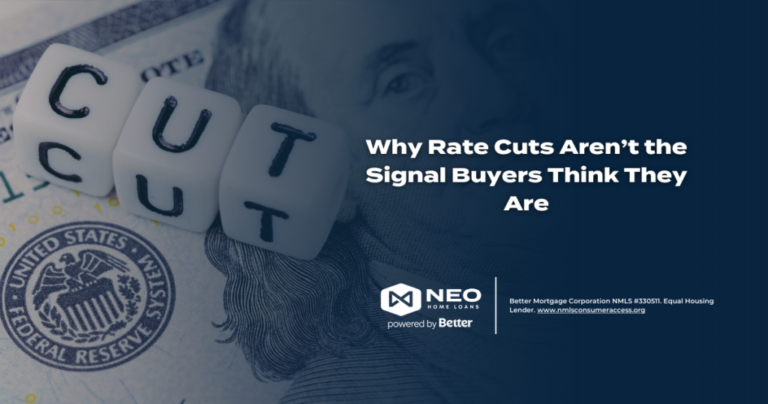
If you’ve been trying to keep up with the economy lately, it’s easy to feel a little overwhelmed.
Between talk of tariffs, stubborn inflation, interest rates staying higher for longer, and now the creation of the new DOGE (Department of Government Efficiency), there’s no shortage of noise out there.
But beneath the headlines, something important is unfolding—something that could actually work in favor of people looking to buy a home, refinance, or simply plan their next move wisely.
Here’s a breakdown of what’s happening, what it could mean for the housing market, and why keeping an eye on the next few months could pay off in a big way.
What’s Happening with Tariffs, Inflation, and the Economy
At first glance, tariffs look like they would fuel inflation.
Higher taxes on imported goods usually mean higher prices at the store, and when prices go up, mortgage rates tend to follow.
But as Dan Habib from MBS Highway explained in our recent webinar, there’s more to it this time around.
Consumers are already stretched thin:
- Credit card debt just topped $1.2 trillion—the highest in history (source: MBS webinar with Dan Habib).
- Job openings are falling.
- Subprime auto and credit card delinquencies are now higher than they were during the Great Recession.
When people are maxed out, they simply can’t keep spending at higher prices.
That forces businesses to either lower prices or risk losing customers. And as demand slows, inflation often follows.
Dan’s takeaway?
Even though tariffs may cause a quick bump in prices, the bigger picture points to a cooling economy and slowing inflation—both of which tend to pull mortgage rates down over time.
Why the New DOGE Department Matters
Another major piece of the puzzle is the DOGE Department.
Its job: help manage $9.2 trillion of U.S. government debt that matures by June 2025.
Here’s the catch:
- Most of that debt was issued when rates were much lower.
- If it has to be refinanced at today’s rates (around 4.3% for a 10-year Treasury, per MBS Highway data), it would massively increase the government’s borrowing costs.
In short, the Treasury needs lower rates—and they need them soon.
That’s where slowing the economy comes in.
By cooling inflation and easing economic growth, they’re creating conditions that could bring rates down, allowing the Treasury to refinance that debt at more manageable levels.
It’s not exactly the story you hear on the nightly news, but it’s the one that serious market watchers—like Dan Habib and the MBS Highway team—are paying close attention to.
So What Does This Mean for Housing?
Here’s where it gets encouraging:
- Inflation is starting to decelerate.
- Dan Habib forecasts that the Fed’s preferred inflation measure (PCE) could drop from 2.8% to 2.6% by late 2025.
- The MBS Highway team expects mortgage rates to move into the low 6% range.
If rates fall, even modestly, the frozen housing market will begin to thaw.
There’s already a record level of pent-up demand from homeowners who stayed put during the high-rate environment.
As Dan noted during the webinar:
“Even just a 1% drop in mortgage rates can make 5 million more people eligible to buy a home.”
That kind of shift can quickly reheat the market—and those who are prepared will be able to take advantage.
What You Can Do Now
If you’re thinking about buying a home, refinancing, or making a move in 2025, this isn’t a time to sit back and wait passively.
Here are a few simple steps you can take now:
- Review your current mortgage and financial situation with an advisor who’s tracking the real trends.
- Stay updated on how inflation and Treasury rates are moving each month (we can help you stay in the loop).
- Have a game plan ready so when rates move, you’re positioned to lock in your opportunity before the crowd rushes in.
The window for lower rates is starting to crack open.
If you prepare ahead of time, you’ll be in a much stronger position to take advantage of it—whether that’s locking in a lower payment or making a move before competition heats up again.
If you’d like to run some numbers or talk about options based on the latest forecasts, we’re here to help.
There’s a lot happening—and having good advice on your side can make all the difference when opportunity strikes.










